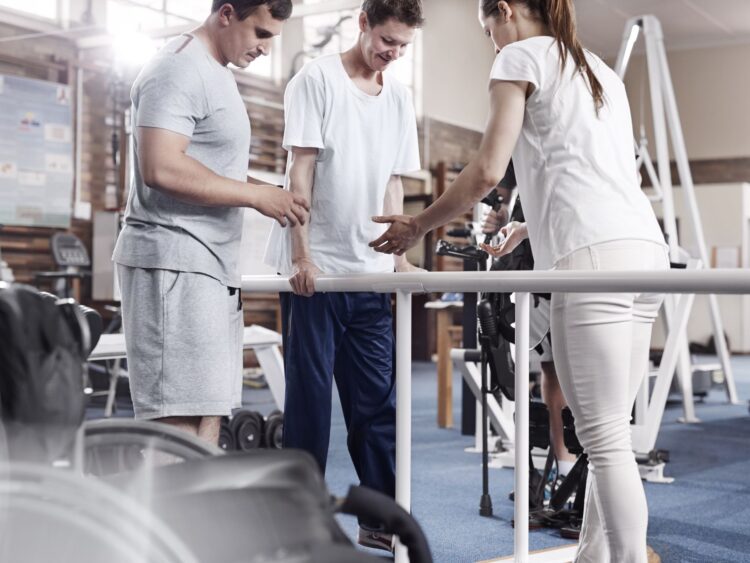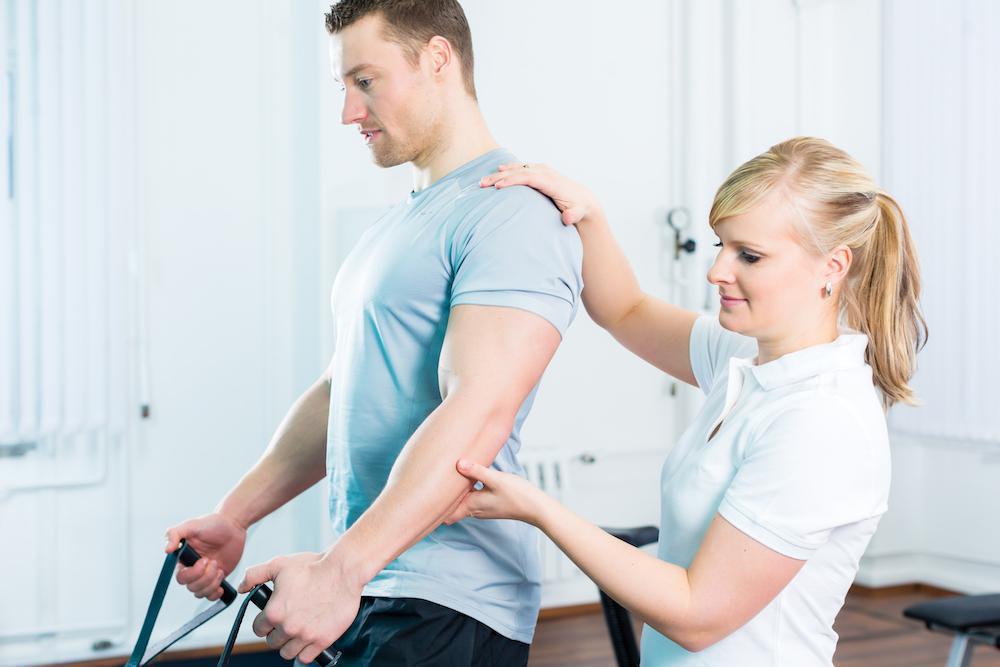Physical therapy exercises are very important after a physical injury for a variety of reasons. First, it is necessary to regain the use of muscles and joints that may have become weakened or stiff from immobility during an injury or from long-term conditions such as arthritis. Orthopedists often prescribe physical therapy exercises after surgery since healing may be more rapid when patients actively move their joints through a full range of motion soon after an operation.
After some injuries, the physical therapist may give certain gentle exercises to do at home. These exercises will help you heal properly and will also reduce your risk of developing problems in that area again in the future.

As many sports injuries occur because a muscle was not strong enough to control a joint during an activity, physical therapy can help to build joint strength and muscle control. A well-rounded exercise program that includes cardiovascular (aerobic) conditioning, as well as stretches for flexibility, can help you maintain overall fitness and health, which is especially important if you have a long-term condition such as arthritis.
Physical therapy exercises may be necessary after many injuries or surgeries.
- Localized pain (such as in the knee)
- Joint replacement surgery (such as hip replacement surgery)
- Tendon injuries (for example, Achilles tendon rupture, rotator cuff tendonitis/tendinosis )
If you have a question or concern about whether physical therapy is right for you, please consult your primary care physician or maybe fisiokit.com. If not, here is a list of some physical therapy exercises.
Physical therapy exercises can be performed at home as long as they do not cause pain and further damage to the affected area. In many cases, these must be performed under the supervision of a physical therapist. The following are 10 common types of physical therapy exercises:
- Walking/running
- Knee bends (without weights)
- Chest Press machine
- Triceps Pushdown machine
- Prone Press-up on elbows (on knees if necessary)
- Lat Pulldowns
- Shoulder Shrugs
- Standing Toe Touch
- Hamstring Curls (without weights)
- Squats with a chair or firm object behind the back for support/balance if necessary
Please consult your physician before beginning any exercise program, especially one designed to increase fitness and muscle strength.”
Goals of Physical Therapy

There are different exercises for a specific injury but the overall goals are:
– To maintain fitness and reduce the risk of future injuries
– Improve joint movement, coordination, and control
– Improve muscle strength around the affected joint(s)
– Strengthen muscles to compensate for those that are not functional around the injured area
– Restore normal body mechanics (movement patterns)
Possible limitations of physical therapy include pain or other symptoms during the activity, especially if it increases with increased frequency/duration/intensity. This may be an indication that you’re pushing too hard. If pain persists after any physical therapy exercises, stop the exercise immediately. Consult your physician before resuming these exercises or any other exercise program.
Other limitations may include equipment availability, insurance coverage, and/or cost of physical therapy exercises.
Physical therapy exercises are very important after a physical injury for various reasons. First, it is necessary to regain the use of muscles and joints that may have become weakened or stiff from immobility during an injury or from long-term conditions such as arthritis. Orthopedists often prescribe physical therapy exercises after surgery since healing may be more rapid when patients actively move their joints through a full range of motion soon after an operation.
After some injuries, the physical therapist may give certain gentle exercises to do at home. These exercises will help you heal properly and will also reduce your risk of developing arthritis later on. If you are concerned about whether physical Therapy exercises are right for you, please consult your doctor or other health care professional.
Remaining active with physical therapy exercises can help to prevent future pain and injuries by maintaining strong muscles and healthy joints. These should not cause pain but if they do, stop the activity immediately. Consult your doctor if any exercise causes pain during or after it is performed.
Physical Therapy is Customized to Fit Each Patient

Before starting any physical therapy exercises, consultation is necessary as this type of exercise is customized to the individual patient. The following are some factors that may affect your specific program:
- Specific conditions and injuries: This helps figure out what caused the problem and why it won’t go away on its own. Sometimes they can also help determine which exercises you should avoid or modify.
- Medical history: Some medical conditions such as diabetes or a previous injury might require special attention during certain physical therapy exercises.
- The current level of fitness: If you’re not in shape already, getting started with an initial physical therapy exercises program might be easier than if you were already in shape. If you aren’t, start off gradually and work up to a more strenuous program.
- Other activities: Some people have jobs or lifestyle habits that put them at risk for developing other types of health conditions such as heart disease, high blood pressure, or even obesity. The physical Therapist might include exercises to promote overall fitness and preventive wellness along with exercises for your specific injury as part of your treatment plan.
Physical therapy is the key to maintaining strength and range of motion after an injury or surgery.

In conclusion, physical therapy exercises are very important after a physical injury for various reasons. First, it is necessary to regain the use of muscles and joints that may have become weakened or stiff from immobility during an injury or from long-term conditions such as arthritis. Orthopedists often prescribe physical therapy exercises after surgery since healing may be more rapid when patients actively move their joints through a full range of motion soon after an operation. So it is very important to follow these and recover completely.

